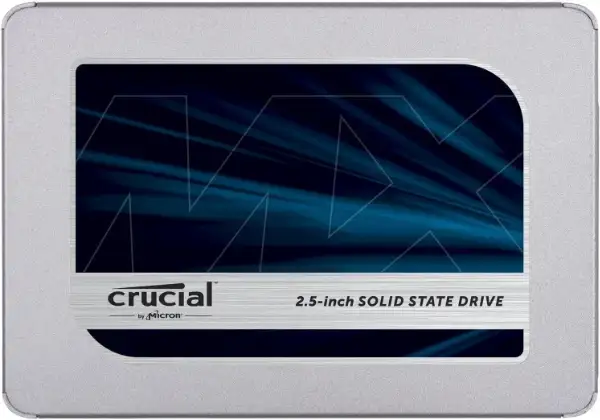
Launched in May 2014 at Computex, Crucial’s MX100 was a consumer solid-state drive (SSD) series manufactured by Crucial (a Micron brand). It was designed as the direct replacement for the popular M500 series, targeting mainstream consumers looking for a cost-effective upgrade from traditional hard drives.
At launch, pricing was approximately $0.62 per gigabyte for the 128GB model and less than $0.50 per gigabyte for the 512GB variant, effectively doubling the storage capacity available at typical SSD price points of the time. This aggressive pricing strategy placed the MX100 in direct competition with drives such as the Samsung 840 EVO, OCZ ARC 100, and SanDisk Ultra II.
Crucially, the MX100 was positioned below Crucial’s own M550 series, which continued to serve the high-end market. The MX100 topped out at 512GB capacity, while the M550 offered a 1TB option for more demanding users.
Technical Specifications
| Specification | 128GB | 256GB | 512GB |
|---|---|---|---|
| Part Number | CT128MX100SSD1 | CT256MX100SSD1 | CT512MX100SSD1 |
| Controller | Marvell 88SS9189 | Marvell 88SS9189 | Marvell 88SS9189 |
| NAND Type | Micron 20nm 128Gbit MLC/TLC | Micron 16nm 128Gbit MLC | Micron 16nm 128Gbit MLC |
| DRAM Cache | 512MB LPDDR2-1067 | 512MB LPDDR2-1067 | 512MB LPDDR2-1067 |
| Interface | SATA 6Gb/s (AHCI) | SATA 6Gb/s (AHCI) | SATA 6Gb/s (AHCI) |
| Form Factor | 2.5-inch 7mm | 2.5-inch 7mm | 2.5-inch 7mm |
| Sequential Read | 550 MB/s | 550 MB/s | 550 MB/s |
| Sequential Write | 150 MB/s | 330 MB/s | 500 MB/s |
| Random Read (4KB) | 80,000 IOPS | 85,000 IOPS | 90,000 IOPS |
| Random Write (4KB) | 40,000 IOPS | 70,000 IOPS | 85,000 IOPS |
| Power Consumption (Idle) | <100mW | <100mW | <100mW |
| Power Consumption (Active) | ~150mW | ~150mW | ~150mW |
| Power Consumption (Max) | N/A | 3.7W | 4.2W |
| Endurance Rating | 72 TBW | 72 TBW | 72 TBW |
| Warranty | 3 years | 3 years | 3 years |
| Launch MSRP | $80 USD | $110 USD | $225 USD |
Controller
The MX100 utilizes the Marvell 88SS9189 controller (codenamed “Renoir”) – a minor upgrade from the 88SS9187 used in the M500. Key improvements in the 88SS9189 include support for LPDDR memory and enhanced power management during sleep mode through DevSleep (Device Sleep) support, enabling ultra-low power consumption in standby states. It features 8 NAND channels and was paired with Crucial’s custom firmware optimized for the specific NAND configuration.
NAND Type
The MX100 was notable as the first mainstream consumer SSD to make use of Micron 16nm 128Gbit (16GB) MLC NAND flash memory for the 256GB and 512GB models. This was a significant process node shrink from the 20nm NAND used in previous generations, enabling lower manufacturing costs and higher die density. The 128GB model used either 20nm 128Gbit NAND or, according to some sources, TLC (Triple-Level Cell) NAND.
There were performance implications due to the use of 128Gbit die capacities throughout the product line. Due to the higher capacity per die, fewer dies were required to achieve a given capacity, which reduced NAND channel parallelism. This resulted in significantly lower write speeds for the 128GB model (150 MB/s) compared to the 512GB model (500 MB/s), as the controller had fewer dies to work with in parallel.
Expert Reviews
All in all, I have nothing negative to say about the MX100. With the performance and feature set, combined with pricing that basically doubles the amount of storage you get for your dollar, it’s an absolute no-brainer. Unless you are an enthusiast or professional with a heavy IO workload, the MX100 is currently the drive with the best bang for the buck in the market by far.
StorageReview – June 2, 2014
Though the MX100 offers a combination of respectable performance, enterprise-grade data protection and aggressive price point. The net result is an SSD that makes a compelling upgrade choice, especially for those who have had data reliability concerns in moving from hard drives to an SSD.
Was this helpful?
0 / 0